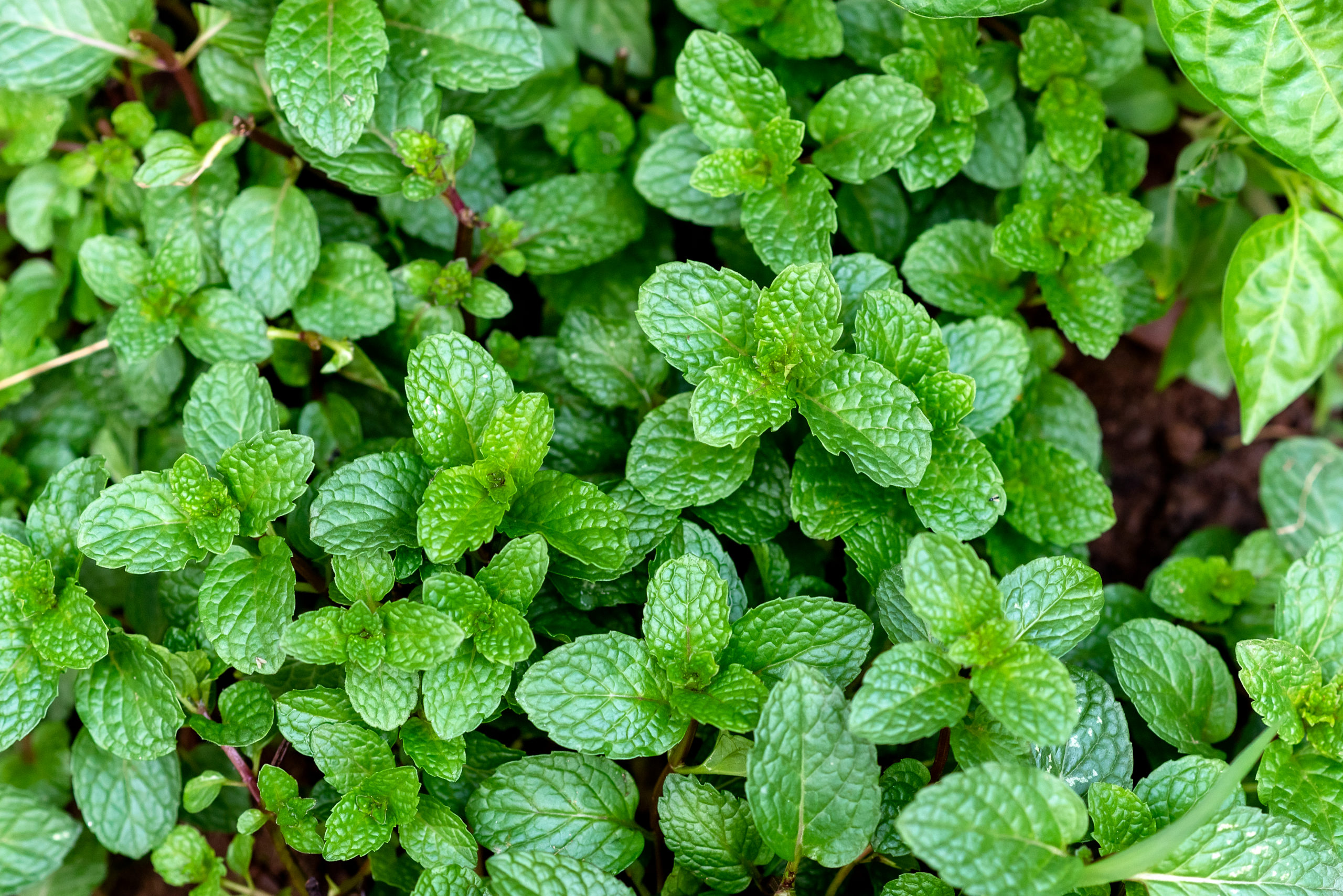

Peppermint (Mentha × piperita, also known as Mentha balsamea Wild)[1] is a hybrid mint, a cross between watermint and spearmint.[2] Indigenous to Europe and the Middle East,[3] the plant is now widely spread and cultivated in many regions of the world.[4] It is occasionally found in the wild with its parent species.[4][5]
Although the genus Mentha comprises more than 25 species, the one in most common use is peppermint.[6] While Western peppermint is derived from Mentha piperita, Chinese peppermint, or “Bohe”, is derived from the fresh leaves of Mentha haplocalyx.[7][8][9] Mentha piperita and Mentha haplocalyx are both recognized as plant sources of menthol and menthone and are among the oldest herbs used for both culinary and medicinal products.[6][10]
Botany
Peppermint flowers1887 illustration from Köhlers; Medicinal Plants
Peppermint was first described in 1753 by Carl Linnaeus from specimens that had been collected in England; he treated it as a species,[11] but it is now universally agreed to be a hybrid.[12] It is a herbaceous rhizomatous perennial plant that grows to be 30–90 cm (12–35 in) tall, with smooth stems, square in cross section. The rhizomes are wide-spreading, fleshy, and bear fibrous roots. The leaves can be 4–9 cm (1+1⁄2–3+1⁄2 in) long and 1.5–4 cm (1⁄2–1+1⁄2 in) broad. They are dark green with reddish veins, and they have an acute apex and coarsely toothed margins. The leaves and stems are usually slightly fuzzy. The flowers are purple, 6–8 mm (1⁄4–5⁄16 in) long, with a four-lobed corolla about 5 mm (3⁄16 in) diameter; they are produced in whorls (verticillasters) around the stem, forming thick, blunt spikes. Flowering season lasts from mid- to late summer. The chromosome number is variable, with 2n counts of 66, 72, 84, and 120 recorded.[13][14][15] Peppermint is a fast-growing plant; once it sprouts, it spreads very quickly.
Ecology
Peppermint typically occurs in moist habitats, including stream sides and drainage ditches. Being a hybrid, it is usually sterile, producing no seeds and reproducing only vegetatively, spreading by its runners. If placed, it can grow almost anywhere.[5][15]
Outside of its native range, areas where peppermint was formerly grown for oil often have an abundance of feral plants, and it is considered invasive in Australia, the Galápagos Islands, New Zealand,[16] and the United States[17] in the Great Lakes region, noted since 1843.[18]
Cultivation
Peppermint grown in a pot outside a house
Peppermint generally grows best in moist, shaded locations, and expands by underground rhizomes. Young shoots are taken from old stocks and dibbled into the ground about 1.5 feet apart. They grow quickly and cover the ground with runners if it is permanently moist. For the home gardener, it is often grown in containers to restrict rapid spreading. It grows best with a good supply of water, without being water-logged, and planted in areas with part-sun to shade.
The leaves and flowering tops are used; they are collected as soon as the flowers begin to open and can be dried. The wild form of the plant is less suitable for this purpose, with cultivated plants having been selected for more and better oil content. They may be allowed to lie and wilt a little before distillation, or they may be taken directly to the still.
Cultivars
A number of cultivars have been selected for garden use:
- Mentha × piperita ‘Candymint’ has reddish stems.
- Mentha × piperita ‘Chocolate Mint’. Its flowers open from the bottom up; its flavour is reminiscent of the flavour in Andes Chocolate Mints, a popular confection.
- Mentha × piperita ‘Citrata’. This classification includes a number of varieties including eau de Cologne mint,[23] grapefruit mint, lemon mint, and orange mint. Its leaves are aromatic and hairless.
- Mentha × piperita ‘Crispa’ has wrinkled leaves.
- Mentha × piperita ‘Lavender Mint’.
- Mentha × piperita ‘Lime Mint’ has lime-scented foliage.
- Mentha × piperita ‘Variegata’ has mottled green and pale yellow leaves
